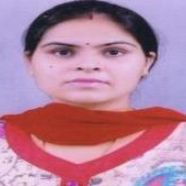International Journal of Education and Management Engineering (IJEME)
IJEME Vol. 15, No. 5, 8 Oct. 2025
Cover page and Table of Contents: PDF (size: 507KB)
Enhancing Institutional Quality Assessment in Higher Education Using LSTM-NMPSO Hybrid Model
PDF (507KB), PP.45-52
Views: 0 Downloads: 0
Author(s)
Index Terms
Quality Assessment, Higher Education, Optimization Algorithm, Artificial Neural Network, Particle Swarm Optimization
Abstract
Advancements in educational assessment methodologies, driven by high-speed data networks, have enabled the efficient management and analysis of large datasets, replacing traditional testing methods. Even though they are frequently used, traditional statistical methods have the potential to incorporate biases into assessments of the caliber of universities. To address these limitations, the application of automated technologies is necessary for identifying key factors influencing institutional quality. Developing effective educational programmes in higher education requires quality assurance. Academic performance evaluation using Machine Learning (ML) and Artificial Intelligence (AI) techniques yields more accurate predictive models than traditional methods. This research proposes a hybrid approach that integrates Long Short-Term Memory (LSTM) neural networks with Novel Modified Particle Swarm Optimization (NMPSO) to optimize model architecture, enabling more precise and unbiased assessments of institutional quality. The objective of the proposed methodology is to improve the objectivity and reliability of institutional quality evaluations in higher education.
Cite This Paper
Devika Chhachhiya, Jyoti Yadav, "Enhancing Institutional Quality Assessment in Higher Education Using LSTM-NMPSO Hybrid Model", International Journal of Education and Management Engineering (IJEME), Vol.15, No.5, pp. 45-52, 2025. DOI:10.5815/ijeme.2025.05.04
Reference
[1]M. Frazer, “Quality assurance in higher education. In A.Craft(Ed) Quality assurance in higher education,” pp. 17–34, 2003.
[2]M. Kayyali, “An Overview of Quality Assurance in Higher Education: Concepts and Frameworks Manager of Higher Education Quality and Assessment Council HEQAC,” Sciences, Innovation, and Technology IJMSIT Review Paper, vol. 4, no. 2, pp. 1–04, 2023.
[3]P. L. Bokonda, K. Ouazzani-Touhami, and N. Souissi, “Predictive analysis using machine learning: Review of trends and methods,” 2020 International Symposium on Advanced Electrical and Communication Technologies, ISAECT 2020, no. November 2021, 2020.
[4]Y. Cun, Y. Bengio, and G. Hinton “Deep Learning,” Nature, vol. 29, no. 7553, pp. 1–73, 2015.
[5]M. H. Sazli, “A brief review of feed-forward neural networks murat h. sazli,” Commun. Fac. Sci. Univ. Ank. Series., vol. 50, no. 1, pp. 11–17, 2006.
[6]Y. Cheng, Q. Wang, and N. C. Liu, “How World-Class Universities Affect Global Higher Education,” How World-Class Universities Affect Global Higher Education, pp. 1–10, 2014.
[7]J. A. Richard, “The role of higher education in the 21st century.,” International Journal of Multidisciplinary Research and Modern Education (IJMRME), vol. 1, no. 1, pp. 652–656, 2015.
[8]R. Lukman, D. Krajnc, and P. Glavič, “University ranking using research, educational and environmental indicators,” Journal of Cleaner Production, vol. 18, no. 7, pp. 619–628, 2010.
[9]S. Kotsiantis, C. Pierrakeas, and P. Pintelas, “Predicting students’ performance in distance learning using machine learning techniques,” Applied Artificial Intelligence, vol. 18, no. 5, pp. 411–426, 2004.
[10]J. Schmidhuber, “Deep Learning in neural networks: An overview,” Neural Networks, vol. 61, pp. 85–117, 2015.
[11]R. C. Eberhar and Y. Shi, “Particle Swarm Optimization: Developments, Applications and Resources,” IEEE Conference, pp. 329–336, 2002.
[12]V. Saminathan, “National Assessment and Accreditation Council ( NAAC ) of India – A Critical review,” no. February, 2023.
[13]P. Pathak, “Role of NAAC in Improving Quality Of Higher Education In India,” vol. 11, no. 3, pp. 2320–2882, 2023.
[14]H. Salehinejad, S. Sankar, J. Barfett, E. Colak, and S. Valaee, “Recent Advances in Recurrent Neural Networks,” no. March, 2017.
[15]B. Lindemann, T. Müller, H. Vietz, N. Jazdi, and M. Weyrich, “A survey on long short-term memory networks for time series prediction,” Procedia CIRP, vol. 99, pp. 650–655, 2021.
[16]B. A. Garro, H. Sossa, and R. A. Vazquez, “Design of artificial neural networks using a modified particle swarm optimization algorithm,” Proceedings of the International Joint Conference on Neural Networks, pp. 938–945, 2009.
[17]B. A. Garro and R. A. Vázquez, “Designing Artificial Neural Networks Using Particle Swarm Optimization Algorithms,” Computational Intelligence and Neuroscience, vol. 2015, 2015.
[18]M. Zambrano-Bigiarini, M. Clerc, and R. Rojas, “Standard Particle Swarm Optimisation 2011 at CEC-2013: A baseline for future PSO improvements,” 2013 IEEE Congress on Evolutionary Computation, CEC 2013, no. May 2014, pp. 2337–2344, 2013.
[19]K. E. Parsopoulos, Handbook of Heuristics. 2016.
[20]G. Cybenkot, “Approximation by Superpositions of a Sigmoidal Function,” Mathematics of Control, Signal, and Systems, vol. 9, no. 2, pp. 303–314, 1989.
[21]C. Leave, J. A. Freeman, and D. M. Skapura, Neural Networks: Algorithms, Applications and Programming Techniques., vol. 43, no. 11. 1992.

